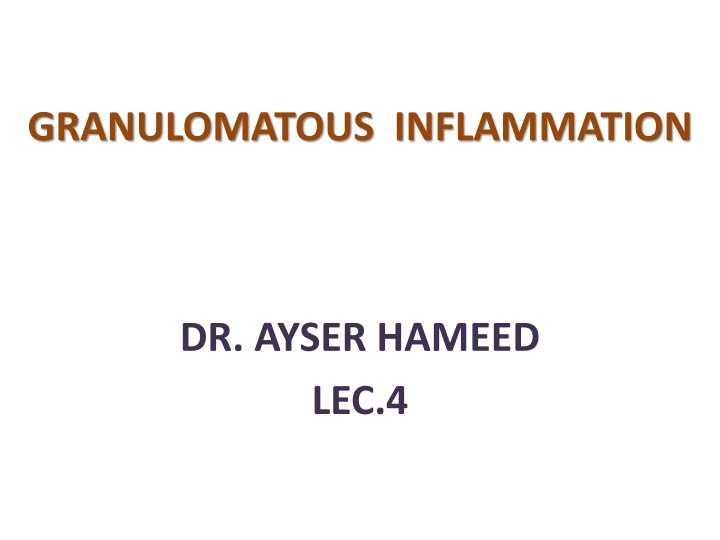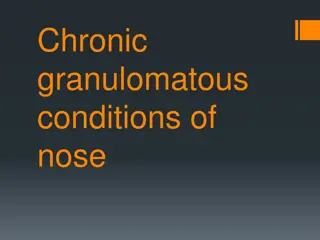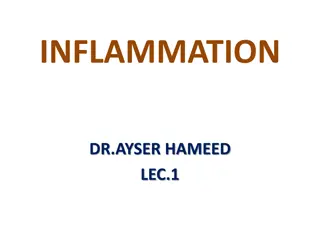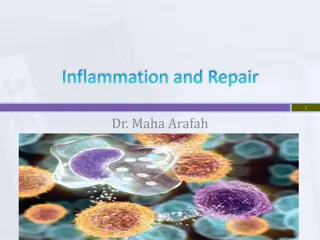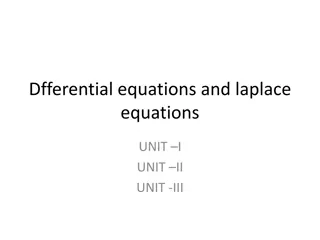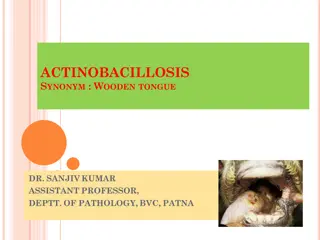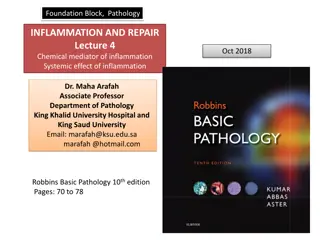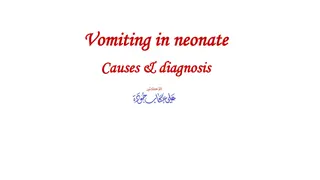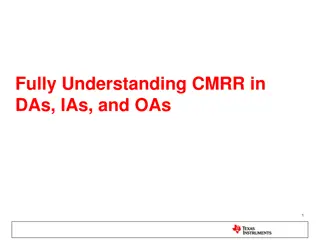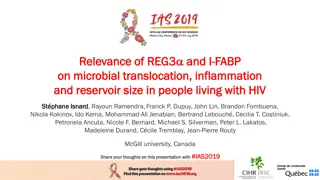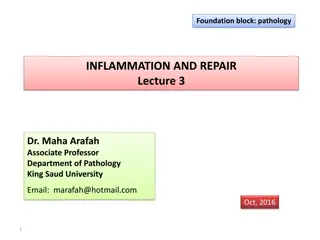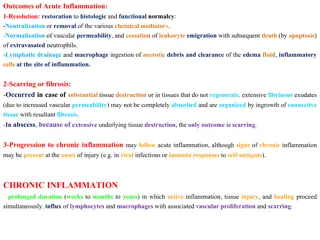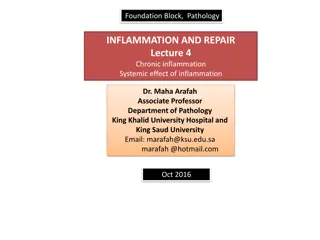Granulomatous Inflammation and Differential Diagnosis
Distinctive pattern of chronic inflammatory reaction characterized by focal accumulations of activated macrophages, causes, recognition in biopsy specimens, types of granulomas, and TB granuloma diagram.
Download Presentation

Please find below an Image/Link to download the presentation.
The content on the website is provided AS IS for your information and personal use only. It may not be sold, licensed, or shared on other websites without obtaining consent from the author.If you encounter any issues during the download, it is possible that the publisher has removed the file from their server.
You are allowed to download the files provided on this website for personal or commercial use, subject to the condition that they are used lawfully. All files are the property of their respective owners.
The content on the website is provided AS IS for your information and personal use only. It may not be sold, licensed, or shared on other websites without obtaining consent from the author.
E N D
Presentation Transcript
GRANULOMATOUS INFLAMMATION DR. AYSER HAMEED LEC.4
This is a distinctive pattern of chronic inflammatory reaction characterized by focal accumulations of activated macrophages, which often develop an epithelioid (epithelial-like) appearance. Causes Granulomatous inflammation is encountered in a number of immunologically mediated infectious and some noninfectious conditions, these include:- 2
1. Tuberculosis. 2. Sarcoidosis. 3. Cat-scratch disease. 4. Lymphogranuloma inguinale. 5. Leprosy. 6. Brucellosis. 7. Syphilis. 8. Some fungal infections. 9. Berylliosis. 10. Reactions of irritant lipids. 3
Recognition of granulomas in a biopsy specimen is important because it shortens the list of the differential diagnosis. A granuloma is a focus of chronic inflammation consisting of a microscopic aggregation of macrophages that are transformed into epithelioid cells surrounded by a collar of mononuclear leukocytes, principally lymphocytes and occasionally plasma cells. The epithelioid cells have a pale pink granular cytoplasm with indistinct cell borders and a vesicular nucleus that is oval or elongate. 4
Older granulomas develop an enclosing rim of fibroblasts and connective tissue. Frequently, epithelioid cells fuse to form giant cells in the periphery or sometimes in the center of granulomas. These giant cells may attain diameters of 40 to 50 m. They have a large mass of cytoplasm containing 20 or more small nuclei arranged either peripherally (Langhans- type giant cell) or haphazardly (foreign body-type giant cell). 5
Diagram of typical TB granuloma Multinucleated GC Epithelioid cells Caseation Lymphocytes Fibroblasts 6
There are two types of granulomas, which differ in their pathogenesis. 1. Foreign body granulomas which are provoked by foreign bodies. Typically, foreign body granulomas form when material such as talc (associated with intravenous drug abuse), sutures, or other fibers are large enough to preclude phagocytosis by a single macrophage and do not incite any specific inflammatory or immune response. 7
Epithelioid cells and giant cells form and are apposed to the surface of the foreign body and/or actually include it. The foreign material can usually be identified in the center of the granuloma, particularly if viewed with polarized light, in which it appears refractile. 8
Foreign body giant cells in suture granuloma Two foreign body giant cells are seen, where there is a bluish strand of suture material (arrow) from a previous operation 9
2. Immune granulomas these are caused by insoluble, poorly degradable or particulate particles, typically microbes that are capable of inducing a cell- mediated immune response. In these responses, macrophages engulf the inciting agent, process it, and present some of it to appropriate T lymphocytes, causing them to become activated. The responding T cells produce cytokines, such as IL-2, which activates other T cells, perpetuating the response, and IFN- , which is important in activating macrophages and transforming them into epithelioid cells and multinucleate giant cells. 10
The typical example of an immune granuloma is that caused M. tuberculosis. In tuberculosis, the granulomatous reaction is referred to as a tubercle and is classically characterized by the presence of central caseous necrosis, whereas caseation is rare in other granulomatous diseases. 11
It is always necessary to identify the specific etiologic agent by special stains for organisms (e.g., acid-fast stains for tubercle bacilli), by culture methods (e.g., in tuberculosis and fungal diseases), by molecular techniques (e.g., the polymerase chain reaction in tuberculosis), and by serologic studies (e.g., in syphilis). 12
TB granulomas Caseation Epithelioid cells This is a high power view showing a portion of typical TB granuloma. Note the amorphous, pinkish central caseation, which is surrounded by a rim of epithelioid cells. 13
CONSEQUENCES OF DEFECTIVE OR EXCESSIVE INFLAMMATION Defective inflammation typically results in:- 1. Increased susceptibility to infections. 2. Delayed healing or repair of wounds. 3. Tissue damage. Delayed repair is due to the fact that the inflammatory response provides the necessary stimulus to get the repair process started. Excessive inflammation is the basis of many categories of human disease that include allergies and autoimmune diseases. 14
Recent studies, however, are pointing to an important role of inflammation in a wide variety of human diseases that are not primarily disorders of the immune system. o These include:- 1. Cancer. 2. Atherosclerosis. 3. Ischemic heart disease. 4. Some neurodegenerative diseases such as Alzheimer disease. 15
In addition, prolonged inflammation and the fibrosis that accompanies it are responsible for much of the pathology in many chronic infectious, metabolic and other diseases. Since these disorders are some of the major courses of many kind, it is not surprising that the normally protective inflammatory response is being called the "silent killer". 16
TISSUE REPAIR REGENERATION & HEALING BY FIBROSIS Critical to survival is the ability to repair the damage caused by injurious agents & inflammation. Repair: refers to the restoration of tissue architecture and function after an injury. This occurs by regeneration &/or healing. Regeneration: complete reinstitution of the damaged components of the affected tissue i.e. the tissue essentially returns to a normal state. 17
Healing is a reparative process characterized by laying down of connective (fibrous) tissue that results in scar formation. This mode occurs when:- 1. The injured tissues are incapable of complete regeneration, or 2. The supporting structures of the tissue are severely damaged. 18
Although the resulting fibrous scar is not normal, it provides enough structural stability that allows the injured tissue to function. Both regeneration and healing by fibrosis contribute in varying degrees to the ultimate repair. Repair involves :- a. The proliferation of various cells, and b. Close interactions between cells and the extracellular matrix (ECM). 19
THE CONTROL OF CELL PROLIFERATION Several cell types proliferate during tissue repair. These include:- 1. The remnants of the injured tissue (which attempt to restore normal structure). 2. Vascular endothelial cells (to create new vessels that provide the nutrients for the repair process). 20
3. Fibroblasts (the source of the fibrous tissue that fills defects). The proliferation of the above cell types is driven by growth factors. The production of polypeptide growth factors, responses of cells to these factors, and the ability of these cells to divide and expand in numbers are all important determinants of the adequacy of the repair process. The normal size of cell populations in any given tissue is determined by a balance of cell proliferation, cell death by apoptosis, and emergence of new differentiated cells from stem cells. 21
Mechanisms regulating cell populations. Cell numbers can be altered by increased or decreased rates of stem cell input, cell death via apoptosis, or changes in the rates of proliferation or differentiation. 22
